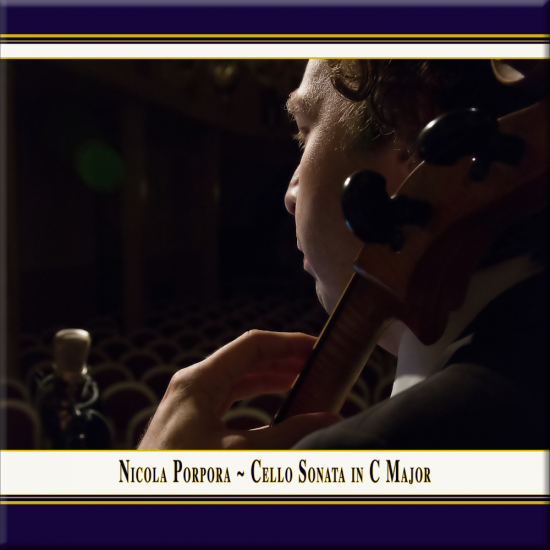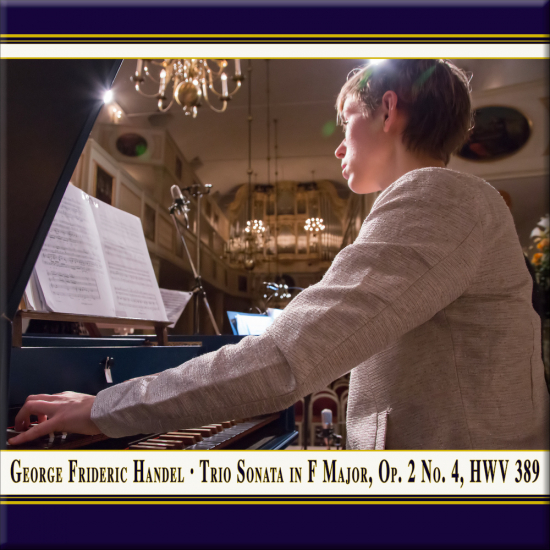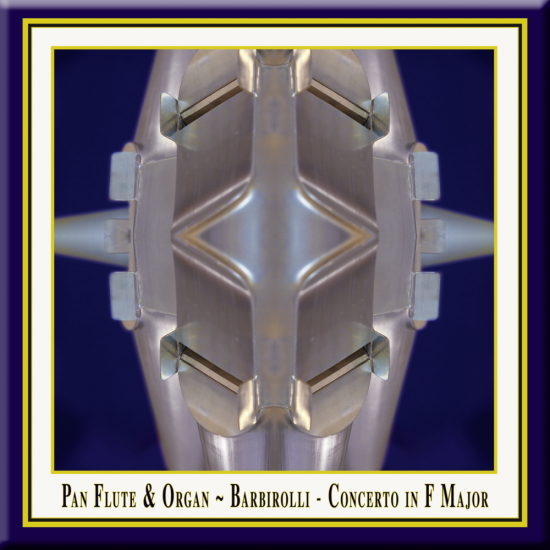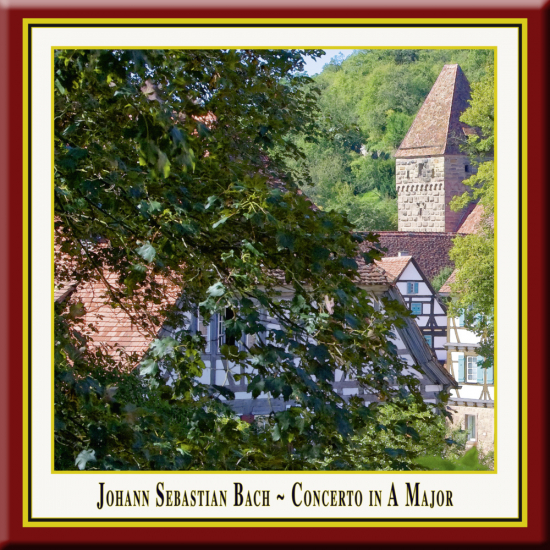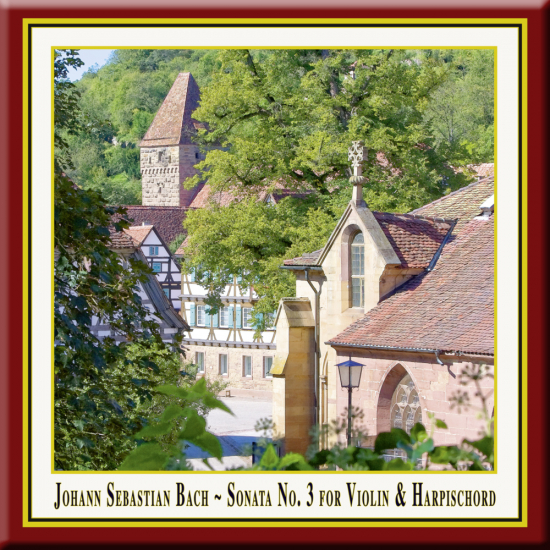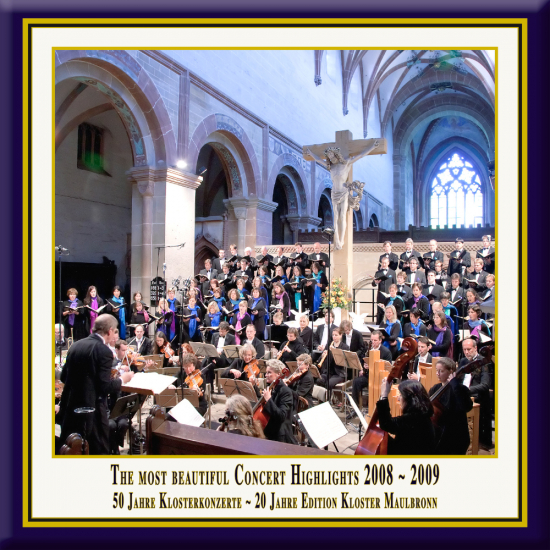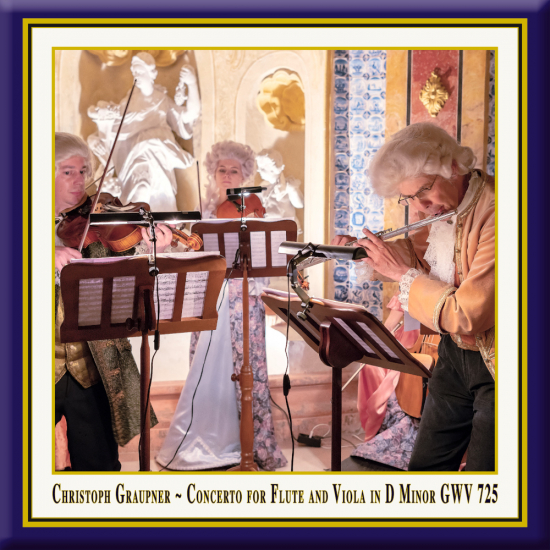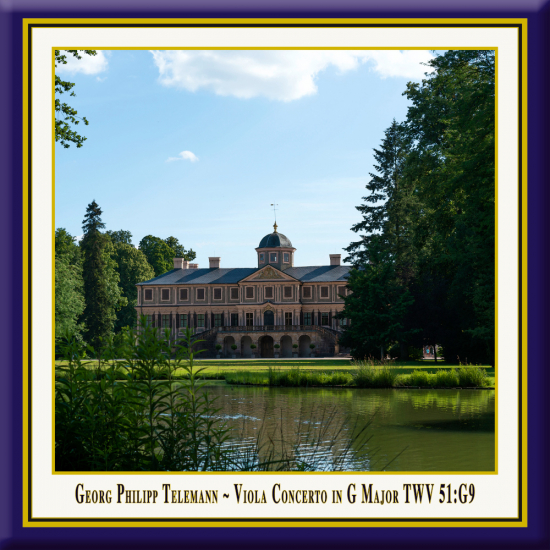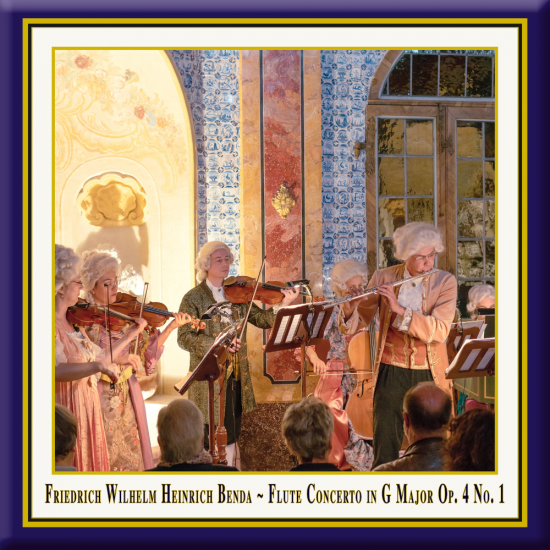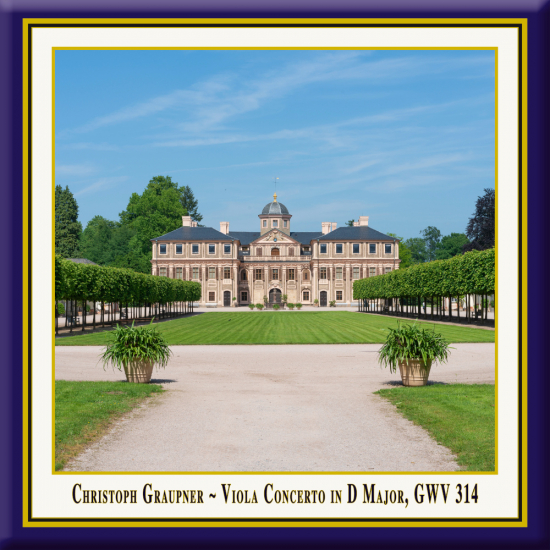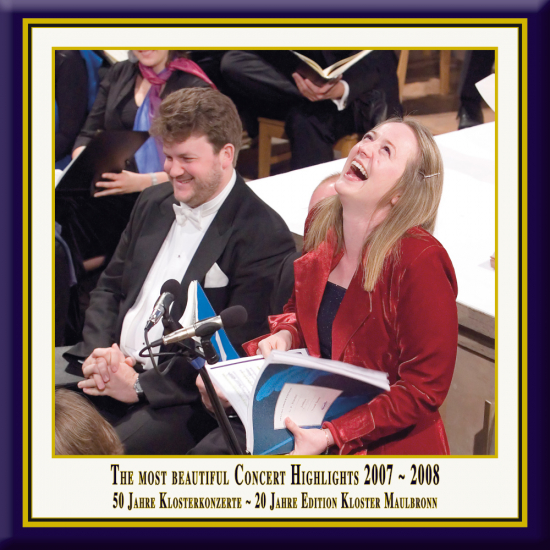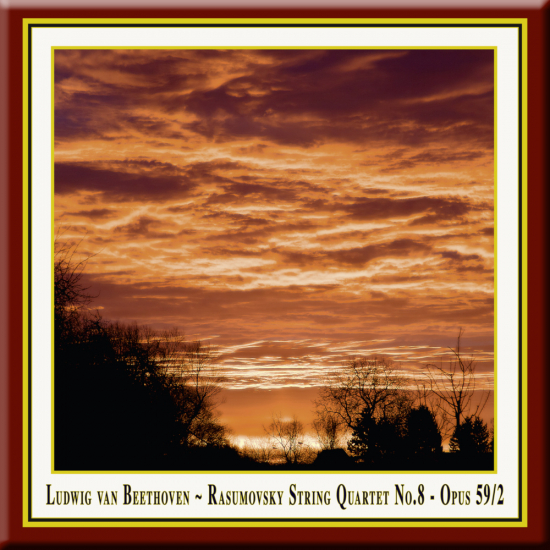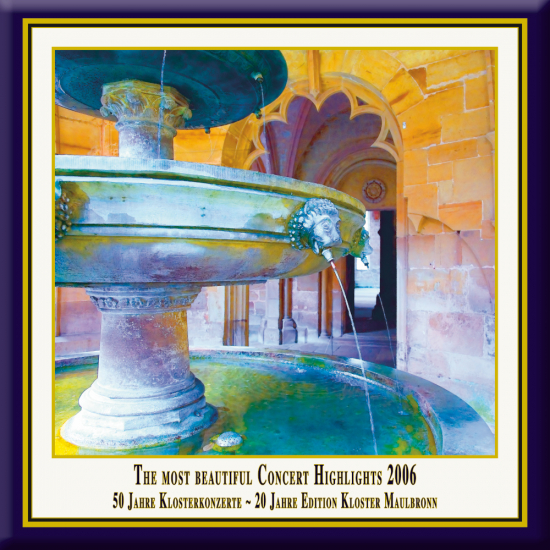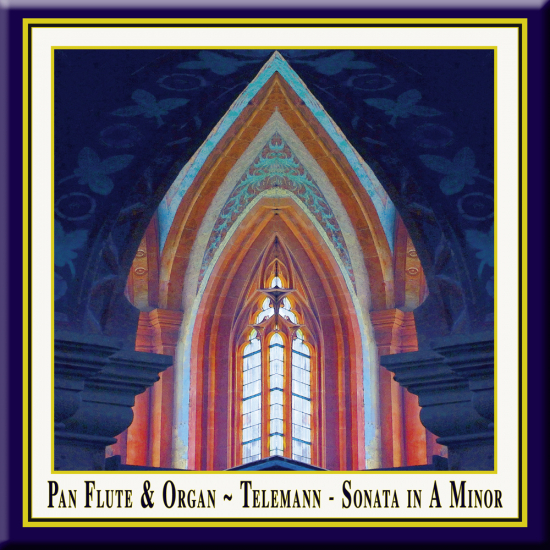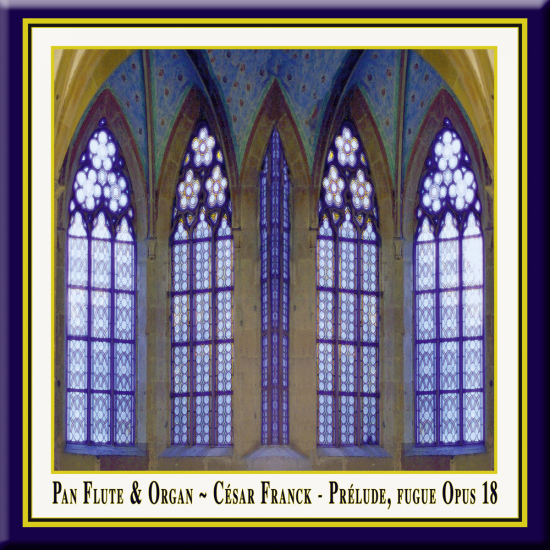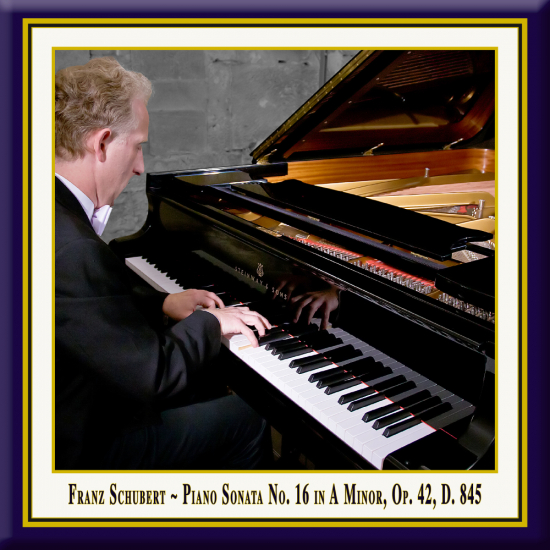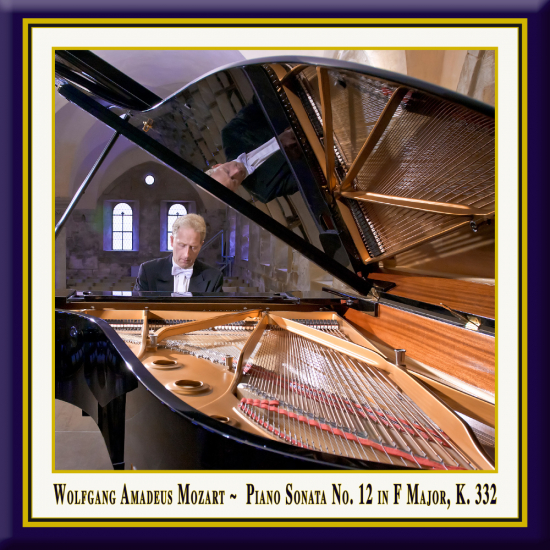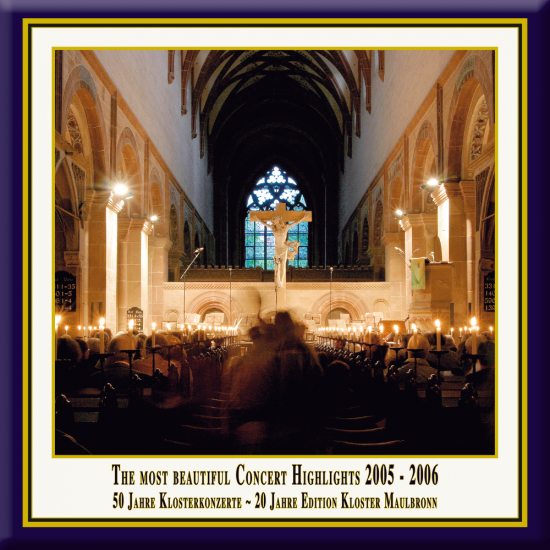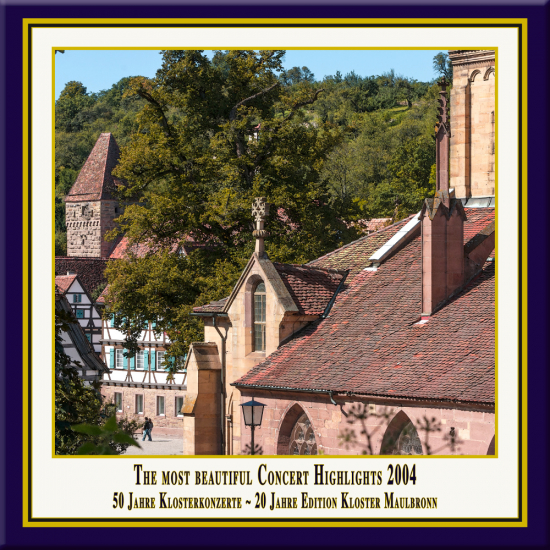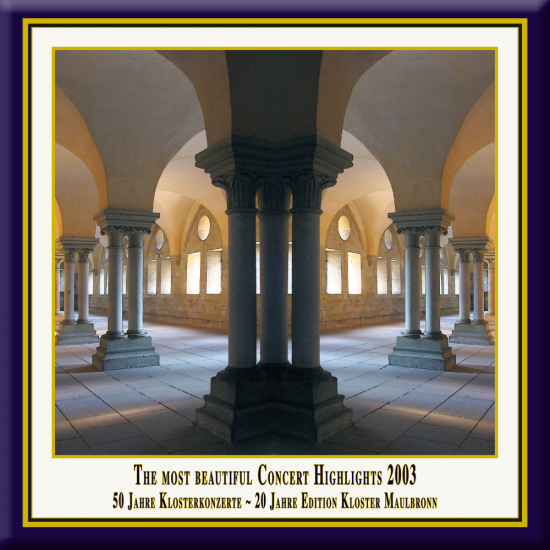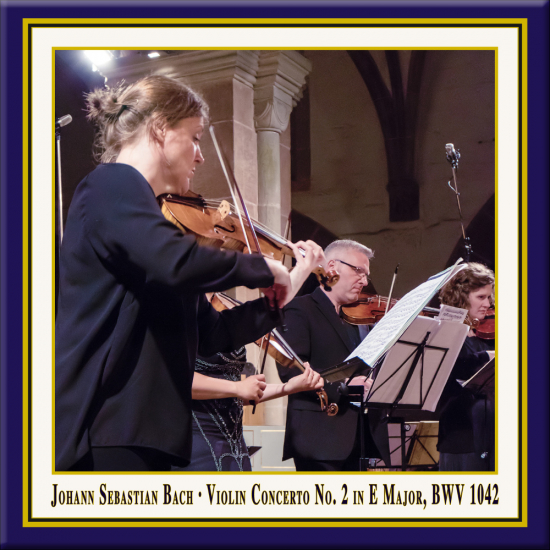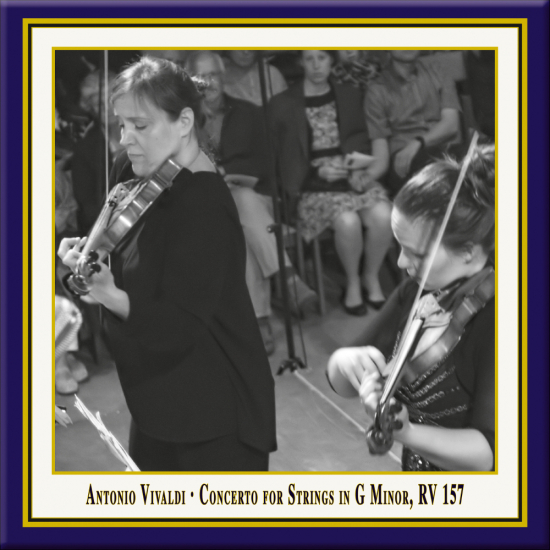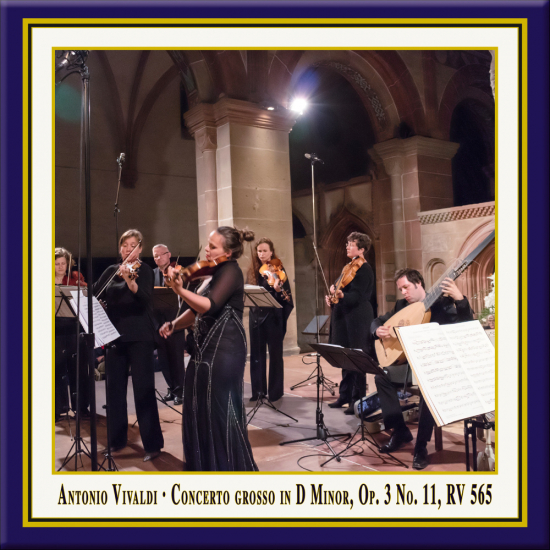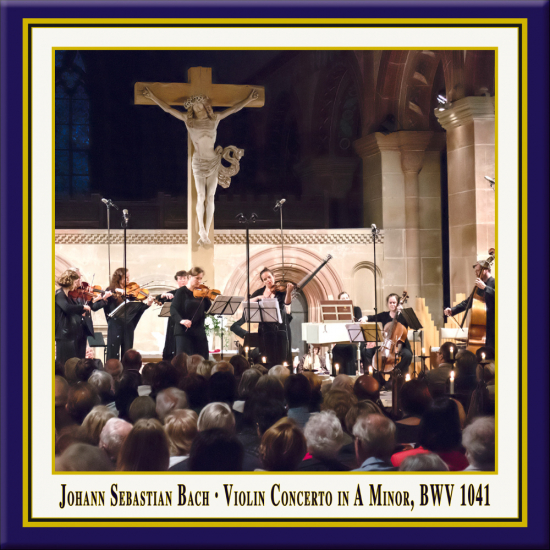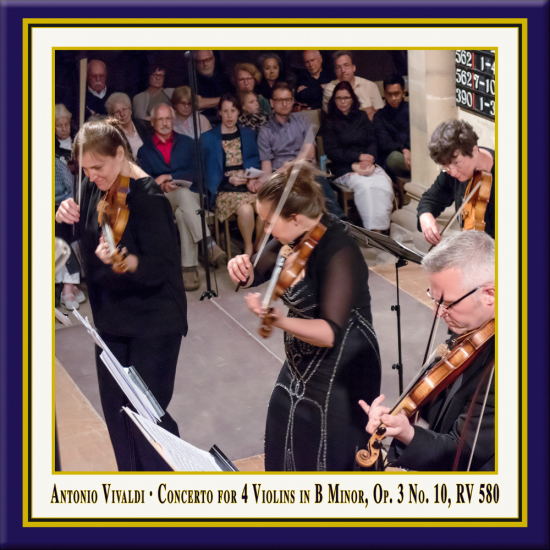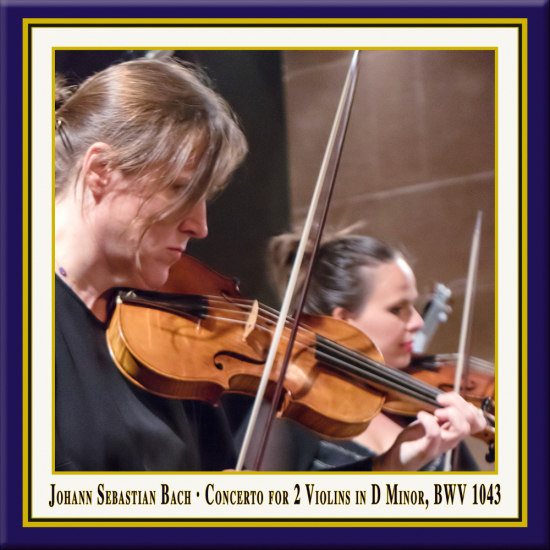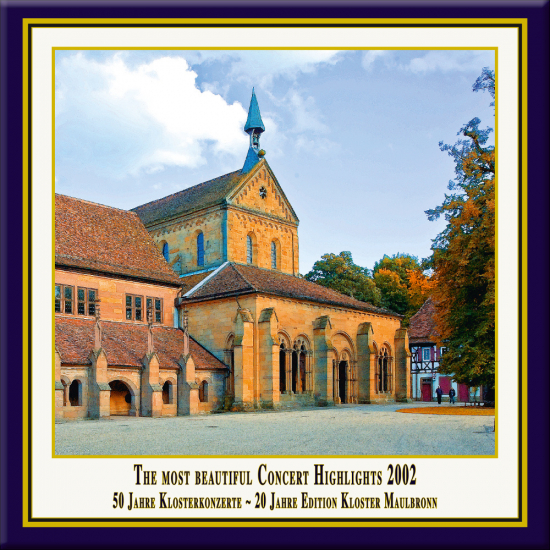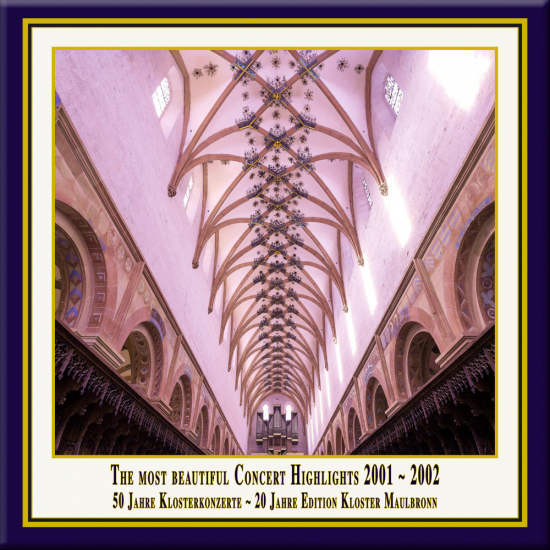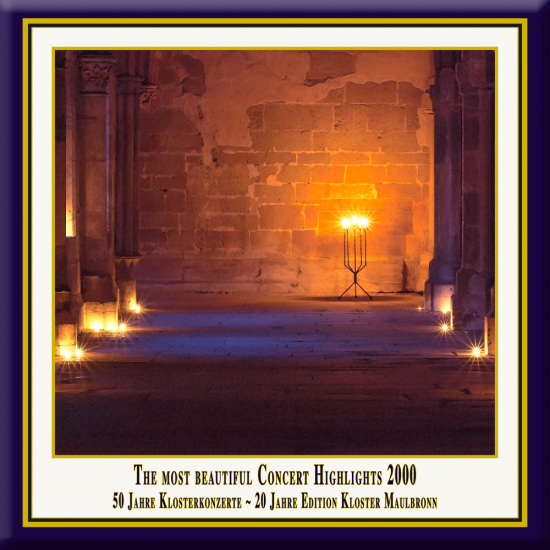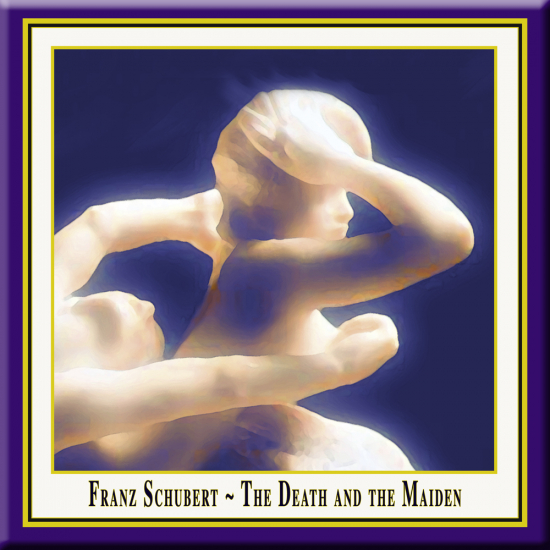
Israel in Egypt by George Frideric Handel (1685-1759)
During the second half of the 17th century, there were trends toward the secularization of the religious oratorio. Evidence of this lies in its regular performance outside church halls in courts and public theaters. Whether religious or secular, the theme of an oratorio is meant to be weighty. It could include such topics as Creation, the life of Jesus, or the career of a classical hero or biblical prophet. Other changes eventually took place as well, possibly because most composers of oratorios were also popular composers of operas. They began to publish the librettos of their oratorios as they did for their operas. George Frideric Handel also wrote secular oratorios based on themes from Greek and Roman mythology. He is also credited with writing the first English language oratorio. "Israel in Egypt", the fifth of the nineteen oratorios which Handel composed in England, was written in 1738, the composition of the whole colossal work occupying but twenty-seven days. It was first performed April 4, 1739, at the King's Theatre, of which Handel was then manager. It is essentially a choral oratorio. It comprises no less than twenty-eight massive double choruses, linked together by a few bars of recitative, with five arias and three duets interspersed among them. Unlike Handel's other oratorios, there is no overture or even prelude to the work. Therefore - exactly how conductor Jürgen Budday did it - many artists starts the performance of "Israel in Egypt" with the Overture from the Oratorio "Solomon". Especially because of the fact, that Handel replaced in 1756 the first part of "Israel in Egypt" (which was originally a funeral anthem for Queen Caroline) through an shortened version of the first act from his oratorio "Solomon". Handel's London oratorios usually includes three parts or acts. However, "Israel in Egypt" has been published and almost performed with two parts, which follows the compositional technique for Oratorios in Italy. The first part describes "the exodus" of the Israelites from Egypt to escape the slavery. The second part, "The Song of Moses", is basically a huge praise and victory anthem, which reflects the persecution and salvation. It ends in praise and glory to the Lord. A short double chorus ("The Lord shall reign for ever and ever"), a few bars of recitative referring to the escape of Israel, the choral outburst once more repeated, and then the solo voice declaring ("Miriam the prophetess took a trimbrel in her hand, and all the women went out after her with timbrels and with dances; and Miriam answered them"), lead to the final song of triumph - that grand, jubilant, overpowering expression of victory which, beginning with the exultant strain of Miriam ("Sing ye to the Lord, for He hath triumphed gloriously"), is amplified by voice upon voice in the great eight-part choir, and by instrument upon instrument, until it becomes a tempest of harmony, interwoven with the triumph of Miriam's cry and the exultation of the great host over the enemy's discomfiture, and closing with the combined power of voices and instruments in harmonious accord as they once more repeat Miriam's words ("The Horse and his Rider hath He thrown into the Sea").
This live recording of "Israel in Egypt" is part of a cycle of oratorios and masses, performed in the basilica of Maulbronn Abbey under the direction of Jürgen Budday. The series combines authentically performed oratorios and masses with the optimal acoustics and atmosphere of this unique monastic church. This ideal location demands the transparency of playing and the interpretive unveiling of the rhetoric intimations of the composition, which is especially aided by the historically informed performance. The music is exclusively performed on reconstructed historical instruments, which are tuned to the pitch customary in the composer's lifetimes (this performance is tuned in a' = 415 Hz).

Musique baroque de Telemann
The primary occupation of the Wolfgang Bauer Consort is the performance of authentic Baroque chamber music pieces. The English Baroque term "Consort" accurately describes an ensemble comprising one or two soloists and a continuo of cello and harpsichord. The Consort's open structure provides the fundament for the comprehensive array and musical diversity of this performance in the monastery church, whose outstanding acoustics and atmosphere are able to document the complete range of Baroque virtuosity. Wolfgang Bauer studied in Berlin with Konradin Groth at the Berlin Philharmonic's Orchesterakademie. At the age of 21 he was taken on by the RSO Franfurt while still a student as principal solo trumpeter. He stayed with that orchestra for 12 years and was also solo trumpeter with the symphony orchestra of Bavarian Radio. He has attended intensive study courses with Lutz Köhler and Ed. H. Tarr. His breakthrough as a soloist came in 1993, when Wolfgang Bauer won the German Music Competition and the ARD International Music Competition in Munich in quick succession. Since then, he has been acknowledged as one of the leading trumpeters of his generation and has appeared as a soloist with famous orchestras like the Royal Philharmonic Orchestra London, the Orchestre National de France, the SO of Bavarian Radio, the radio symphony orchestras of Stuttgart and Frankfurt, the WDR Symphony Orchestra Cologne, the Radio Philharmonic of Hanover, the London Philharmonic Orchestra, the Polish Chamber Philharminic, and the Württemberg and Stuttgart Chamber Orchestra under conductors like Lorin Maazel, Carl St Clair, Donald Runnicles, Dimitri Kitayenko, Andrey Boreyko, Denis R. Davis and Eliahu Inbal. In 2000 Wolfgang Bauer was appointed a professor of trumpet at the "University of music and performing arts" in Stuttgart. In 2009 he was honoured with the ECHO Klassik as "best instrumental soloist of the year". Since its foundation in 1994 the "Wolfgang Bauer Consort" was invited to festivals like the "Rheingau Music Festival", the "Schleswig-Holstein Music Festival" and the "Summer Festival" in Bad Kissingen. Beside tv- and radio-productions for "Hessischer Rundfunk" (Hessian Broadcasting) and "Norddeutscher Rundfunk" (North German Broadcasting) the Consort released a honoured CD for children in 2005 and another live-recording from Maulbronn Abbey, which includes the 2nd Brandenburg Concerto by J.S. Bach et al. This concert was performed by Dietlind Mayer, Violin at "il capriccio" for example, Ludwig Hampe, sought specialist on the viola d'amore and soloist in the "Frankfurt Opera Orchestra", and Petra Müllejans, one of the leading baroque violinists in Europe. She is professor at the Academy of Music in Frankfurt and concert master, musical director, soloist and chamber musician of the "Freiburg Baroque Orchestra". One focus of her musical work is chamber music from the 17th and 18th century, which she performs with the "Freiburg Baroque Consort" and the Ensemble "The Age of Passions". The woodwind group was Georg Siebert (oboe), Ingo Goritzki (oboe) - professor at the Academy of Music in Stuttgart - and Arie Hordijk on bassoon. The Trumpet section consisted of Wolfgang Bauer, Tobias Ziegler and Martin Maier (Stuttgart State Opera), supported on timpani by Gregor Daszko. The basso continuo (figured bass) with Thomas Strauss on harpsichord and Clemens Weigel on cello form the basis of the Consort. Both are renowned baroque specialists. Thomas Strauss is cantor in Oppenau, Clemens Weigel is cellist on "Gärtnerplatztheater" Munich. The double bass is performed by Davide Vittone.

Opera without Voices
Highlights from the Opera "Carmen" by Georges Bizet (1838-1875)
and the Opera "Don Giovanni" by Wolfgang Amadeus Mozart (1756-1791)
The Arte Ensemble, founded in 1993 from soloists of the NDR Radiophilharmonie, is playing in various sections from quintet to nonett under the artistically guide of the famous concert-master Kathrin Rabus - musically partner by example of Gideon Kremer or Andras Schiff and violinplayer in the Kandinsky Streichtrio. Some of the musicians also are members of other wellknown chambermusic groups like the Ma`alot Bläserquintett or Klavierduo "Reine Elisabeth" (Wolfgang Manz - Rolf Plagge). The Arte Ensemble is a very welcome guest in the big concert-halls and festivals and refers to a lot of recordings of german broadcast transmitters like NDR Hamburg, BR München, HR Frankfurt and Deutschland Radio Berlin. The Arte Ensemble has published two CDs in co-operation with NDR and the labels CPO and NOMOS. Special attention by the press and the audience was given to the songs after compositions of Giuseppe Verdi: Verdiana - Composizioni da camera.

Grand Piano Masters · Comme un jeux d'eau
Esteemed friends of audiophile music, the concert grand piano is incontestably the king of instruments. I could now wax lyrical about its incomparable dynamics and go into its ability to go from the tenderest of sounds in a soft minor key to the magnificent power of a fortissimo, or I could rhapsodise about its impressive size and elegance. But what makes this instrument really fascinating is its individuality, since each one is unique in itself - created by a master. A concert grand has a life all of its own that a virtuoso can really "get into" and hence bring the work of the composer to life. In our "Grand Piano Masters" series, we get into the character and soul of the concert grand piano and experience, during the performance itself, the dialogue between the instrument, the virtuoso and the performance space.
On this disc you hear the first live-recording of a piano recital with the exceptional artist Magdalena Müllerperth.
Josef-Stefan Kindler, K&K Verlagsanstalt

The Mass in B Minor, BWV 232, by Johann Sebastian Bach (1685-1750)
From Leipzig to Bethlehem: The Mass in B Minor BWV 232 is best thought of as an anthology, a collection of his "best" sacred music that Bach assembled in the last years of his life. During the 1730s and 1740s, Bach put together several such kunstbücher (literally, books of art); the most widely known are The Art of Fugue, the four volumes of the Clavier Übung, and the 17 Chorales of Different Kinds. Some of these anthologies Bach either published or intended to publish; others, like the Mass, he did not. These less "commercial" distillations he left to his heirs, physical and spiritual, to preserve and disseminate to those who were interested. With the exception of the opening four measures of the first "Kyrie", it seems that every movement of the Mass is a reworking of an existing vocal composition, either sacred or secular. At least one such movement, the "Crucifixus", dates to the Weimar years. The "Kyrie" and "Gloria" were put together in 1733, as a presentation piece to the Elector of Saxony and King of Poland, from whom Bach sought, ultimately successfully, the professionally and socially invaluable position of Court Composer. The "Sanctus" is a careful and subtle revision of the setting of the text that he wrote for performance in Leipzig on Christmas Day, 1723. The "Symbolum Nicenum" [the "Credo" section], and the concluding movements of the Mass were added in the late 1740s, when both Bach's eyesight and his health were failing. The "Kyrie", the "Gloria", and the "Symbolum Nicenum" are all in five voices; the texture expands to six voices in the "Sanctus" and eight in the "Osanna". As Joshua Rifkin's controversial, but as yet unrefuted, findings have demonstrated convincingly, the Mass in B Minor, like almost all of Bach concerted vocal music in fact, was meant to be sung by one singer to each line, even in the "choruses". The principle is a simple one: Each performer got his own part, no matter how big or how small his rôle, and he shared that part with no one else. The complement of five "soloists" has caused numerous problems over the years. Who, for instance, sings the "Laudamus te", which is assigned to the second soprano, in a performance for which only one soprano soloist has been engaged? The soprano or the alto? Elly Ameling once remarked in a radio interview that it was the soloist who made the mistake of looking at the conductor first when the aria came up at rehearsal. Many conductors, however, assign the two bass solos to different soloists, when Bach calls only for one bass; the reason is simple: The "Quoniam" lies lower in the main than the "Et in spiritum sanctum". While assembling the second half of the Mass some ten to fifteen years after he delivered the parts of the "Kyrie" and "Gloria" to the Court in Dresden, Bach was not concerned about making the compass of the two arias comport comfortably with one another. Although many, if not all, of the components could have been, and were, performed as parts of the various Leipzig church services for which Bach provided the music, he gave no complete performance of the B Minor Mass, nor, apparently, did he ever intend to put one on. It is, therefore, supremely ironic that this, Bach's own distillation of his "greatest" vocal music, apparently did not receive its first complete performance until more than 100 years after his death. There was, however, great interest in the work among the cognoscenti in the decades after Bach's death as well as in the years after the onset of the general revival of interest in his music that was spawned by Mendelssohn-Bartholdy's seminal performance of the St. Matthew Passion BWV 244 with the Berlin Singakademie in 1829. Carl Philipp Emanuel Bach put on a performance of the "Symbolum Nicenum" in Hamburg in 1784, preceding it with a short instrumental introduction of his own composition. (For this performance, as a guide to his copyists, Philipp Emanuel "touched up" the orchestration a bit on his father's autograph score, which also has sustained some water damage, and his editorial changes went unnoticed until nearly ten years ago. As it happens, therefore, a copy made by Philipp Emanuel's pupil, Schwenke, provides a more accurate text than the autograph itself.) Haydn owned a copy of the Mass. Beethoven unsuccessfully sought to obtain one. Spontini put on a performance of the "Symbolum Nicenum", through the "Et resurrexit", in Berlin in 1828, with 92 in the chorus, 56 strings, clarinets, horns, and bassoons, but no trumpets or oboes. Under the direction of Carl Friedrich Rungenhagen, the Berlin Singakademie gave the "Kyrie" and "Gloria" in 1834, and the balance of the work the following year. Portions of the Mass were performed at the Birmingham Festival as early as 1837, and the Mass was among the works regularly performed by the London Bach Choir, which was founded in 1876. The first complete performance of the B Minor Mass in the USA was given in Bethlehem, Pennsylvania, by The Bach Choir of Bethlehem, under the direction of its founder, Dr. J. Fred Wolle, in 1900. This first public presentation of the Mass in America inaugurated an annual series of festival performances of the work that continues in Bethlehem to this day. For three decades, from 1939 -- seven years after Dr. Wolle's death -- until 1969, The Bach Choir was directed by the distinguished Welsh choral conductor, Ifor Jones. His forthright, Romantic reading of the score -- chockerblock full of rubatos and ritards -- was recorded in 1960 [22]. Even though it is clearly his own interpretative handiwork, Jones's performance preserves many of the interpretive traditions and conventions that had been established by Dr. Wolle in his 32 years at the helm of the Choir, traditions and interpretative quirks that have been almost completely expunged, alas, in recent years. The first "Kyrie", for instance, is preceded by a Moravian chorale. Intoned softly off stagby a brass choir, the hymn setting gives the pitch to the chorus, which comes in, forte, on the chorale's final chord. Un-Bachian though it may be, the effect is undeniably overwhelming. A very large but exceptionally well trained amateur chorus -- more than 175 singers -- is balanced against a smallish orchestra made up largely of members of the Philadelphia Orchestra, including such distinguished instrumentalists as hornist Mason Jones and oboist John DeLancie. The vocal soloists are average; only the golden trumpet of soprano Lois Marshall stands out. In better voice than she was three years earlier when she sang the soprano part for Eugen Jochum, she is assigned the "Laudamus te" in addition to the music normally given to the first soprano. This important documentation of the Bach Choir of Bethlehem's approach to the Mass before it was diluted by a much more recent director's preference for "authenticity" rather than local tradition is also a satisfying reading, one that will prove particularly appealing to those who like Bach played "with the heart on the sleeve" as the old saying goes.
By Teri Noel Towe (December 2001)
Copyright © by Bach Cantatas Website. Contributed by Teri Noel Towe (December 2001). Written by Teri Noel Towe, and originally printed in "Choral Music on Record", edited by Alan Blyth (Cambridge University Press, first published 1991). The copyrights in this article belong to the Cambridge University Press.
This live recording of Bach's Mass in B Minor is part of a cycle of oratorios and masses, performed in the basilica of Maulbronn Abbey under the direction of Jürgen Budday. The series combines authentically performed oratorios and masses with the optimal acoustics and atmosphere of this unique monastic church. This ideal location demands the transparency of playing and the interpretive unveiling of the rhetoric intimations of the composition, which is especially aided by the historically informed performance. The music is exclusively performed on reconstructed historical instruments, which are tuned to the pitch customary in the composer's lifetimes (this performance is tuned in a' = 415 Hz).











